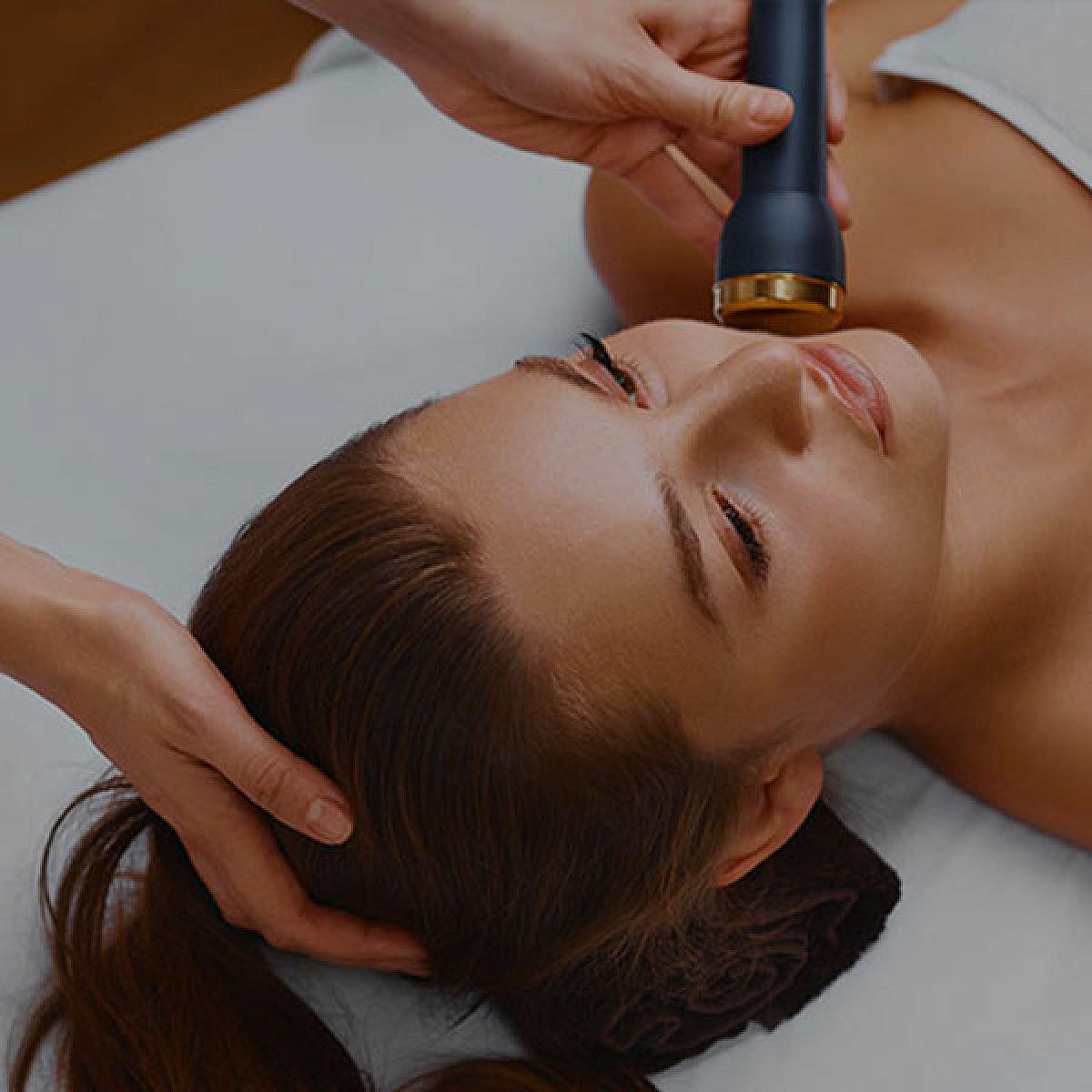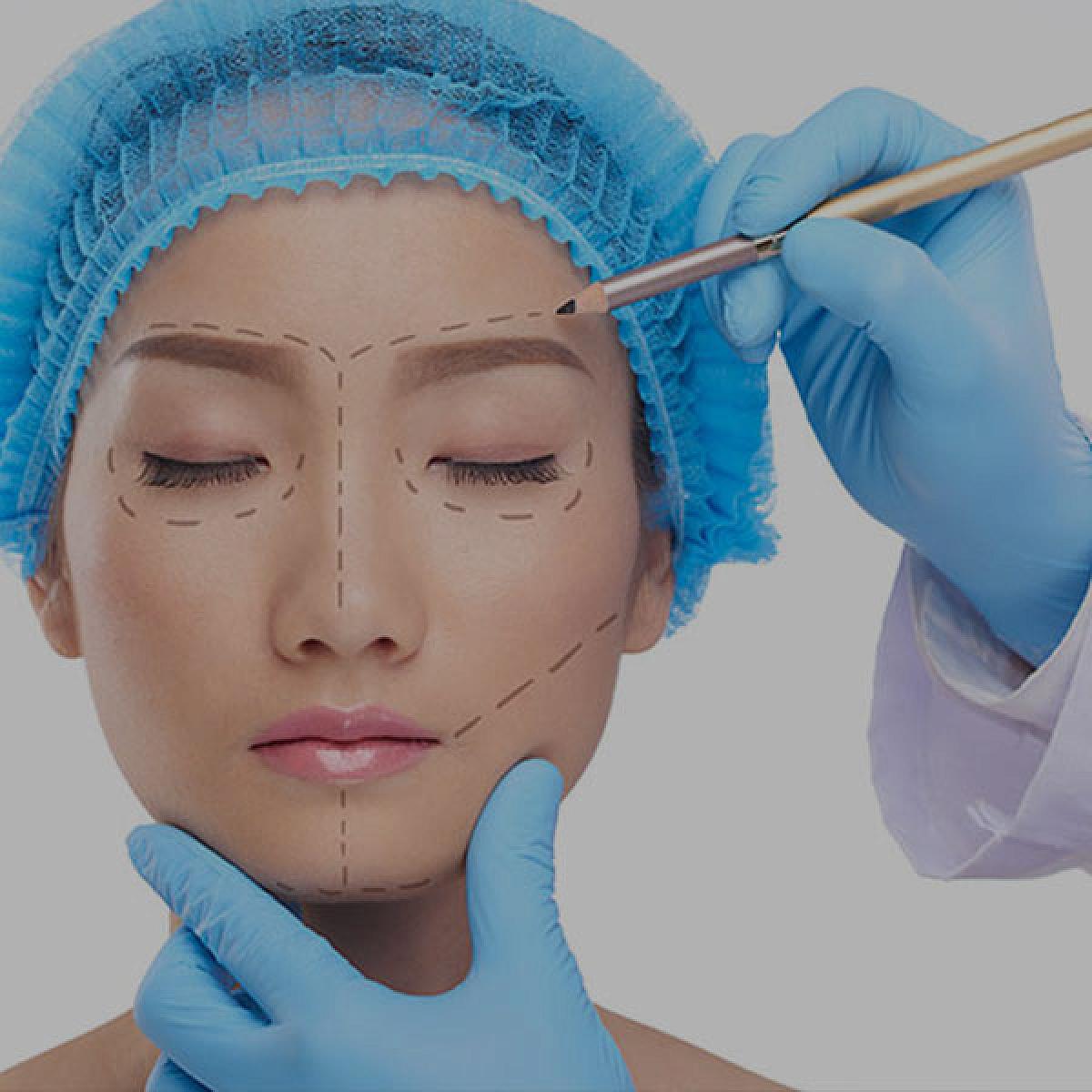![[media-entity-reference:media-alt]](/sites/g/files/zrelqx136/files/styles/billboard_tablet/public/media/images/2021/b-breast-augmentation.jpg?itok=An4ZhfGV)
![[media-entity-reference:media-alt]](/sites/g/files/zrelqx136/files/styles/billboard_desktop/public/media/images/2021/b-breast-augmentation.jpg?itok=1ycssJKx)
Breast Implants & Breast Surgery
Procedure Cost
Saline Implants
$6,550*
Silicone Implants
$7,500*
*This price is an estimate and doesn’t include additional procedures or prescriptions. Please consult with our office to learn your actual cost.
Breast augmentation, also known as augmentation mammoplasty, is a plastic surgery procedure to increase your breast size. During the procedure, your surgeon will place a breast implant behind your breast tissue or muscle.
Whether you want to enhance your natural features or you’re unhappy with the fullness, shape, or symmetry of your breasts, breast augmentation could help improve your self-image and confidence.
Our plastic surgeons at University of Utah Health specialize in breast augmentation and are board-certified and highly trained with clinical experience to ensure a safe, tasteful result and quality care. As a part of a large university hospital, we can tap into a wide array of resources as well as equipment and training to respond to an emergency, if one arises.
Types of Breast Implants
Your surgeon will help you choose the best implant, size, and positioning to achieve the look you want.
Breast Implant Shapes & Textures
We currently use breast implants that are smooth, not textured. Smooth implants come in a round shape and can move within the breast implant pocket. This means they can maintain a softer feel and move more naturally.
Implant Positioning
Your surgeon will offer various options for breast implant positioning. The options may include:
- Subglandular breast implants — These go over your pectoral muscle and behind your glandular tissue.
- Submuscular breast implants — These go behind your pectoral muscle—fully or partially—and behind your glandular tissue.
Saline vs. Silicone Implants
We offer two types of breast implants: saline and silicone.
Saline and silicone breast implants both have an outer shell made of silicone rubber. The main difference between them is the filling. If you choose saline implants, your surgeon puts them in place empty and then fills them with a sterile salt water or saline solution. Silicone implants come pre-filled with silicone gel that is thicker and feels more like natural breast tissue as compared to a saline implant.
The Food and Drug Administration (FDA) has approved saline implants for breast augmentation in women age 18 and older and silicone implants for breast augmentation in women age 22 and older. However, both of these implant types are available to women of any age for breast reconstruction.
How Much Are Breast Implants?
What Our Breast Augmentation Cost Covers
- Pre-op and follow-up visits for 90 days post-surgery
- Hospital or surgical facility fee
- Anesthesia
- Implants, other surgical supplies, and post-surgical garment
- Surgeon/provider fee
Consultations will be free of charge if you do not plan on going through your insurance. However, if you do plan on going through insurance you will be subject to your insurance provider’s deductible or co-pay.
Insurance Coverage
In most cases, insurance does not cover breast augmentation surgery. However, your insurance may cover post-surgery prescriptions.
Cases where insurance may cover breast augmentation surgery include:
- removing or replacing an implant with a capsular contracture that causes pain or
- breast reconstruction due to loss.
We offer many payment and financing options to help make surgery affordable for you.
What to Expect at Your Consultation
Your breast augmentation consultation will generally take us 30 minutes to one hour to fully assess you and your needs.
At your first appointment, your plastic surgeon will likely:
- examine and measure your breasts,
- take photographs, and
- have implant samples you can try. (Bring a soft bra and form-fitting T-shirt.)
We will also discuss with you:
- how you’d like your breasts to appear and feel,
- past medical issues and mammograms, if you have any,
- breast implant types and sizes as well as surgical techniques,
- likely outcomes, recovery, and potential risks, and
- a cost estimate.
Find a Plastic Surgeon
How to Prepare for Surgery
When we meet with you, we will give you specific instructions to prepare for surgery. They may include:
- no smoking, if you smoke, well in advance of surgery (ideally before your consultation).
- avoiding recreational drugs, if you use them, and certain medications like aspirin and certain anti-inflammatories for a period of time before surgery.
- Do not eat or drink anything after midnight prior to your surgery.
Breast Augmentation Surgery
Before Surgery Begins
As we prepare you for surgery, we will:
- draw guidelines on your skin for incision and implant placement.
- insert an IV that can deliver fluids, general anesthesia, a sedative, and pain medication to your body.
- apply monitors to your skin for your heart rate, blood pressure, and oxygen saturation.
Types of Breast Augmentation Incisions
Our surgeons usually prefer to make incisions (cuts) in one of two places:
- along the breast crease (inframammary incision) or
- around the areola (periareolar incision).
These locations will offer the best control over the implant pocket we create. They are also very well hidden on the breast.
During Breast Augmentation Surgery
Breast augmentation surgery typically lasts one to two hours. To perform your breast augmentation, your surgeon will:
- Make an incision. Incision sizes and locations can vary with the implant you choose, your individual body, and preferences that you or your surgeon have.
- Create a pocket for your implants. To do this, we carefully separate your breast tissue based on the position you and your surgeon choose for your implant.
- Insert your breast implants. Silicone implants come pre-filled. Surgeons put saline implants into the breast empty and then fill them with saline.
- Ensure a symmetrical look. Your surgeon will visually inspect your breasts and may adjust the pocket or implant position to achieve the look you want. If we use saline implants, we then seal them.
- Close your incisions. We usually use dissolvable stitches (sutures), skin adhesive, and/or surgical tape. There will be no stitches to remove.
After Surgery
We will apply bandages and a surgical bra to your breasts. You will rest in a recovery room for one to two hours. When you are ready to go home, you will need someone to drive you. We will prescribe you medications to help manage your pain and prevent infection.
Risks Associated with Breast Augmentation Surgery
Most patients won’t have complications (problems) during breast augmentation surgery. However, some of the risks that can occur soon after surgery include:
- bleeding,
- infection,
- fluid build-up (seroma),
- wound reopening (dehiscence), and
- changes in nipple and breast sensation.
Some problems that may occur in the future include:
- breast feeding challenges,
- mammograms that require additional views,
- a breast implant leak or rupture (which causes a saline implant to deflate but may not be easy to notice with a silicone implant*),
- scar tissue that forms around the implant and makes your breast feel hard (capsular contracture),
- surgery to address an issue, and
- sagging breasts over time, which may require breast lift surgery.
*If you notice a change in breast shape or experience breast pain, we will perform a physical exam, ultrasound, or MRI scan to determine the condition of a silicone implant and the need for further treatment.
What to Expect after Breast Augmentation
How Long Does Pain Last After Breast Augmentation?
You may have acute pain and swelling for several days after breast augmentation surgery. It may be a few weeks before all of your swelling and soreness is gone.
In general, implants that are under the muscle (submuscular) can result in more pain than those that are over the muscle (subglandular). The size of the implant is also a factor.
During breast augmentation recovery, some people can manage the pain and swelling with ice and over-the-counter medicatioon, whereas others may need stronger medication.
How Long Does It Take for Implants to Drop?
It usually takes around three months for your skin, breast tissue, and muscles to relax, which allows your breast implants to settle. It can take a couple months longer if your tissues are firmer than average prior to surgery. Additionally, one implant may settle faster or slower than the other.
Recovering from Breast Surgery
For a smooth recovery, you must follow your plastic surgeon's aftercare instructions. Learn what you can expect as your body heals after your breast surgery procedure.
How Long Do Breast Implants Last?
Today’s breast implants do not have an expiration and can easily last 10 years or more. It’s not uncommon for some manufacturers to offer a lifetime warranty or for patients to outlive their implants.
However, your breasts may start to look different over time due to:
- aging,
- weight fluctuations,
- hormones, and
- gravity.
There is also a chance that your implants could rupture. For these reasons, you may want or need more surgery in the future.
Make an Appointment with Our Plastic Surgeons
Call our office at 801-581-7719 to schedule an appointment with one of our plastic surgeons who are highly qualified in breast augmentation.
Breast Implants and the Risk of ALCL
Recently the Food and Drug Administration (FDA) has identified a possible association between textured breast implants and development of a rare form of cancer called anaplastic large cell lymphoma (ALCL).
The majority of the data suggests the cancer risk is associated with breast implants that have textured surfaces rather than those with smooth surfaces. The risk is low and thus far only a small percentage of patients with textured implants have been found to have ALCL in the United States. Nevertheless, out of an abundance of caution the FDA has recalled a specific brand of textured implants.
The Division of Plastic Surgery at U of U Health has stopped using all brands of textured implants in light of the recent concern of developing ALCL. Please note that the recall of these implants does not mean that the implants need to be removed. If you have concerns or questions regarding the recall please refer to the FDA website or speak with your doctor.
For More Information About the FDA's Ongoing Status on Breast Implants and ALCL







